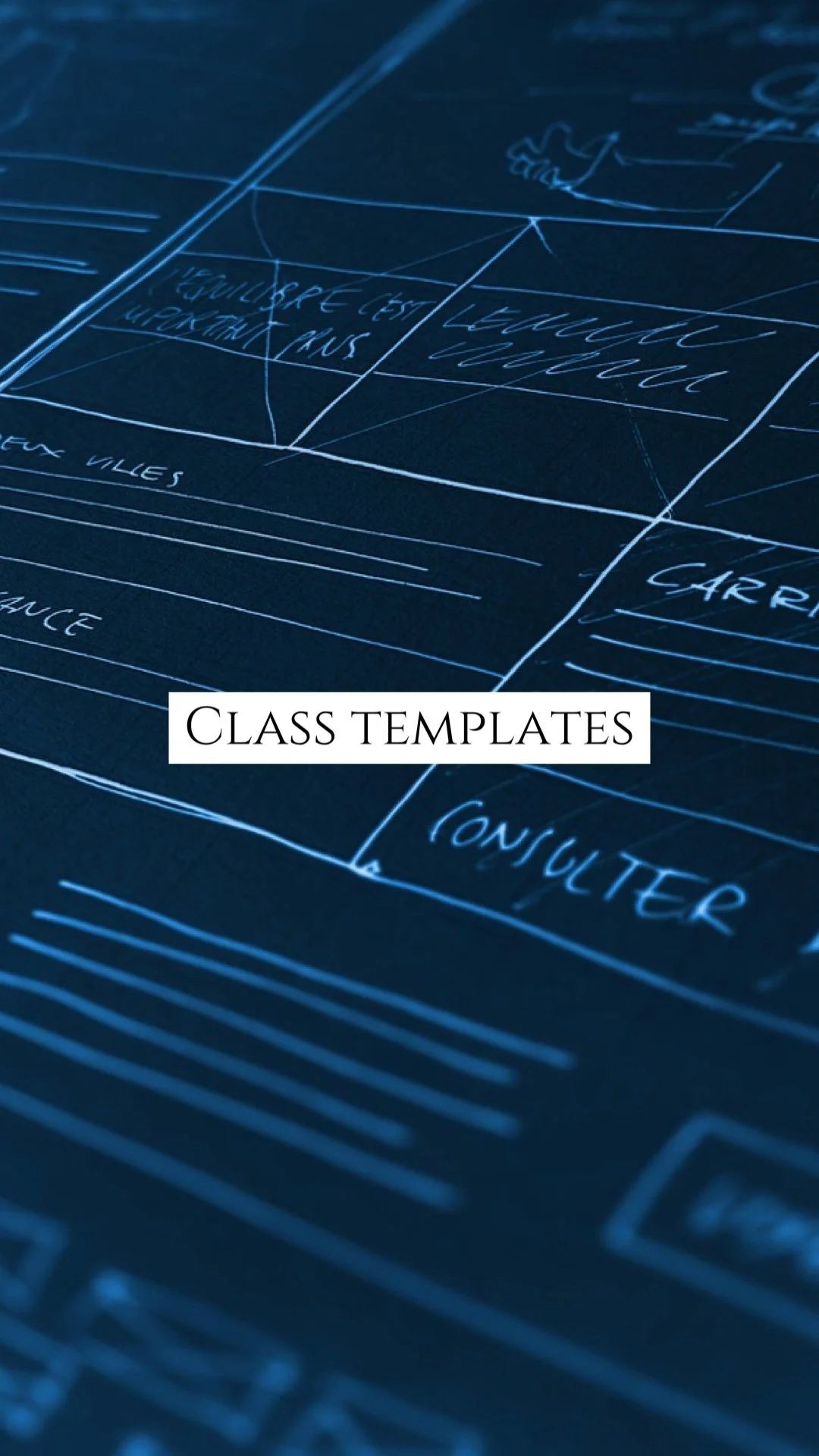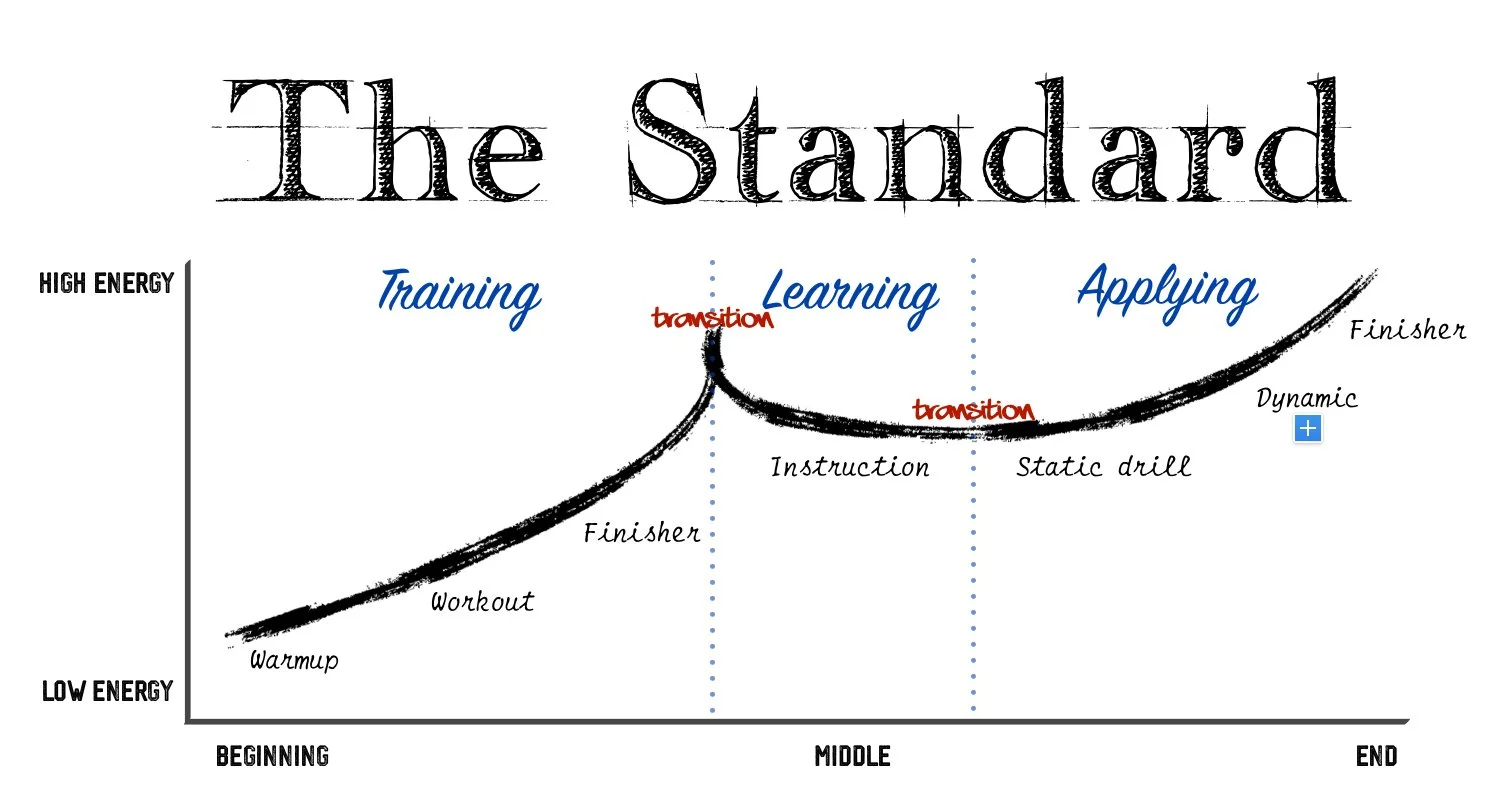Layouts
Chapter Intro
‘Success’ is not random. It is the outcome of a design, habits, and standards. A martial art school is no different. A successful school with plenty of students is essentially a large amount of people saying the same thing, every day for a long time: “I love those classes and need to have them in my life”. This may sound like a tall task to fulfill (and it is), but this is the job. If you have a method in place to ensure all your classes are great, then this task is not tall at all, but rather very simple. In this next series I’ll be sharing several core layouts I’ve used over the years for beginner, intermediate and advanced students and the nuances inside each of them that create student passion easily.
The Standard Layout
A good martial art experience is one where training and teaching are perfectly balanced. Both the mind and body must be pleasantly challenged to yield technical progress. This is an easy concept to understand in theory, what is not easy, is to plan, and execute a well designed class every single night. The job of a teacher is to teach an idea, and train it to become kinetic skill, and this requires consistent planning and execution and not be left to happenstance.
Training phase
By the end of the training section, students must be pushed harder than they would’ve if they were training on their own in a gym. This is the power of positive peer pressure: we tend to train harder as a group than in isolation and as a result motivate one another to reach levels we would’ve otherwise achieved. Your basic goals are: i) increase heart rate, ii) improve basic athleticism (GPP) and iii) create camaraderie. These three outcomes, achieved consistently every night make your class a special experience.
The finisher is of particular note; this is the final 5-7m of a team workout that should be done independently as pairs, as an opportunity to provide your class one final challenge, but leveraging partnership to overcome the challenge.
Your training should finish a a high, with students needing a break and supplying it at the right time. Each class should have a double peak, with the end of the training portion as the first peak, and allowing for some much needed down time
Transitions
Class transitions are like a healthy pause in a conversation. Long enough to gather ourselves, but short enough so as to not end momentum. This allows for energy to recharge, slight banter to create connection amongst one another, or maybe a much needed sip.
The main function of the training section is to prime the body so that the mind can be taught. When we have too much energy and anxiety, we cannot learn a technique smoothly.
Learning phase
The learning phase is the latter half of class, comprising of: i) instruction, ii) static drilling, and iii) dynamic drilling.
Instruction 5-7m
Lasting 5-7m, students should have a understanding of what’s going on, who they are in the situation, and what is happening next. In 5-7m, you should be able to:
Introduce your thesis for the evening
Clearly what is to be done, how, and why
Static Drill 7-10m
If your instruction leaves students clearly knowing what’s going on, who they are in the situation, and what is happening next, then you will have student ‘buy in’. They agree with your subject and prescriptions and wholeheartedly want to participate in the drill prescribed. However as noted above, the job of a teacher is to turn ideas into kinetic skill. At this point, you as the teacher have merely spoken about an idea; a concept from your mind, into their ears and in their minds.
The goal for the rest of the evening is to put that which is in their minds, into their bodies.
The static drill; the first drill prescribed immediately after your instruction should lead them to the skill you seek to create, simply, step by step. It should not be independent, or allow for too much interpretation.
Deconstruct a technique into some basic constituents into 2-3 components (these constituents can be individual movement patterns of a single move, or it can be choreographic with a partner with each constituent representing a move from a partner). Label A, B or C
Execute reps on your timing as a count A=10 reps, B=10 Reps, C=10 Reps
These granular repetitions allow you to see the flaws quickly, so as to correct quickly (so that you set them up for success in the dynamic phase)
Your voice is critical. Employ a strong, commanding voice in this phase to signal clarity, and timing as to which the drill should be performed. This helps keep your class organized and structured.
Dynamic Drills 20-30m
Dynamic drills are cumulative and independent. If the previous drill was granular, then these drills allow students to put techniques together at their own pace. You disappear here and let student stake over and simply enjoy applying what has been taught. This is also where you change hats. Your coaching is smaller and less intrusive. Spend most of your time reinforcing (positive or negative lol). Be near for trouble shooting, but your role is to keep momentum alive
The Main thing:
Start low, Finish high
The standard class is a general class that hits all the marks: Strong physical challenge, paired with high quality instructions that creates passionate practice. Creating a passion for training and practice is your main goal and the standard class is the gateway to such an outcome from recreational students. A recreational student is one who needs to be refreshed; physically, mentally, and emotionally. So the class you produce must balance all three of those items: i) Productive physical training, ii) Mentally engaging instruction in iii,) An exciting atmosphere. The key to a good class is managing the direction of energy—that we always finish the class on a high so people are sent home in their best state.
Flow
The key is to create a cohesive class. That each section be i) Easy enough, ii) Hard enough and iii) Enjoyable in and of itself. If you conduct each section with this mantra, your class should feel like a great episode of an intriguing series you never want to end.
Gradually disappear
The sections tell us who we need to be and dictate our character in such sections. As we train our students, we must lead from the front: with a strong command, clear plan, and sharp eye. As we transition to instruction, our character must change into a teacher: insightful, provocative, and informative. If the drills we prescribe have good flow (easy and hard enough and enjoyable in and of itself) students will finish of the class independently out of an internal momentum and passion.
Most importantly:
Knowing all the micro moments in class is key to having a great class. There is no room for average classes, nor is there any room for sub par classes. The martial art instructor must produce a class that is the best part of someone’s day, every day, all the time for years on end. This happens out of design, and not happenstance. You deliver a great class everyday systematically because you are sensitive to every single moment of training and know how to make the best of every single moment, as opposed to letting time pass by and drag on.


